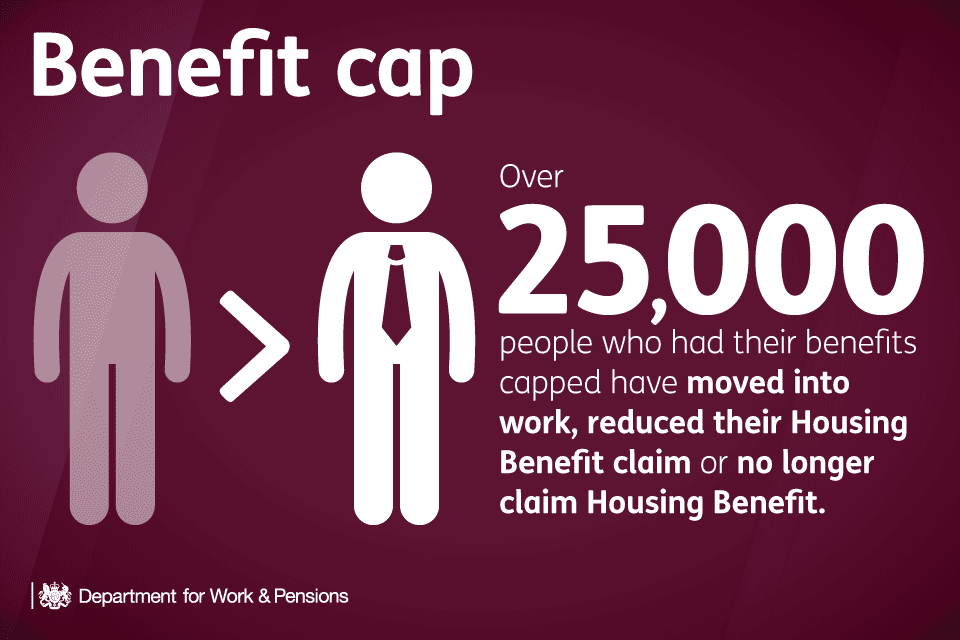
More from the Department of meaningless statistics. A press release from the DWP tells us that “thousands of people move into work or off Housing Benefit”, and just to let us know what that means, the figure on the right is now wearing a tie.
The presentation somewhat exaggerates the effect of the cap. The nineteen-page statistical breakdown is here.
- Figures are given cumulatively from April 2013 to May 2015.
- 62,600 households have had their benefits capped in two years; only 22,500 of those are current. This should be set against the government’s initial estimate of 80,000 in 2013.
- The only people for whom we actually know about work outcomes are those who have moved on to Working Tax Credits. There are 16,300 of them.
- 4,500 people saw their benefit income fall back below the cap anyway.
- 49% of those who are capped are on Income Support.
There is no attempt to assess what difference the cap has actually made. As many claimants move off benefits regardless, the key question is whether they have moved off more rapidly than would otherwise have been the case. Without that information, there is no reason to believe Iain Duncan Smith’s assertion that “the cap is working”. Having said that, there doesn’t seem much point in trying to analyse in detail the disincentive effects of a policy that touches so few claimants. Benefits that are ‘manifestly inadequate’ – the judgment of the Council of Europe – present very little prospect of offering a substantial income.
This is my 600th entry on this blog. The transfer of addresses for the website and the blog was massively time consuming but is now complete and I hope that no-one will have suffered any disruption as a result. If there are any problems I should know about, please let me know via the comments and I’ll try to get them fixed.
